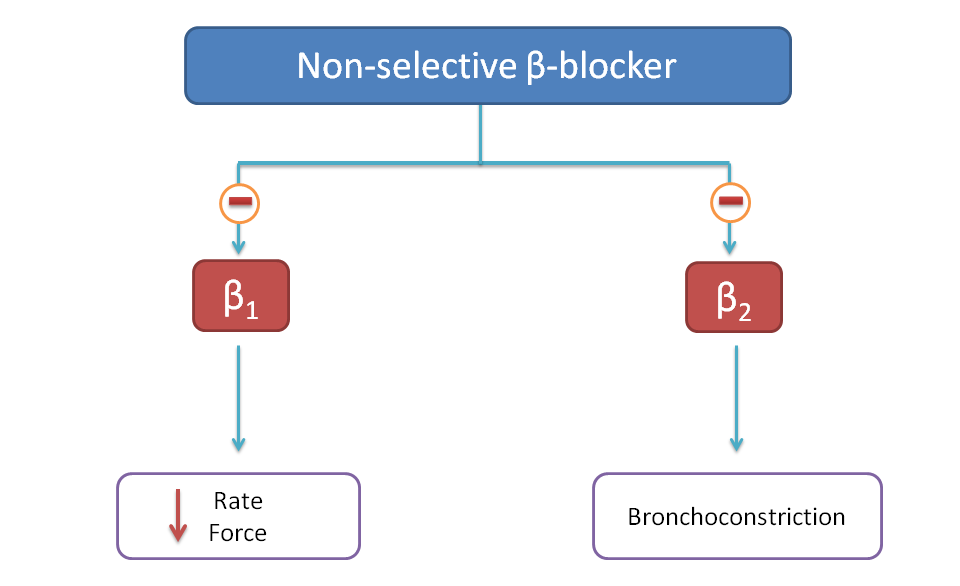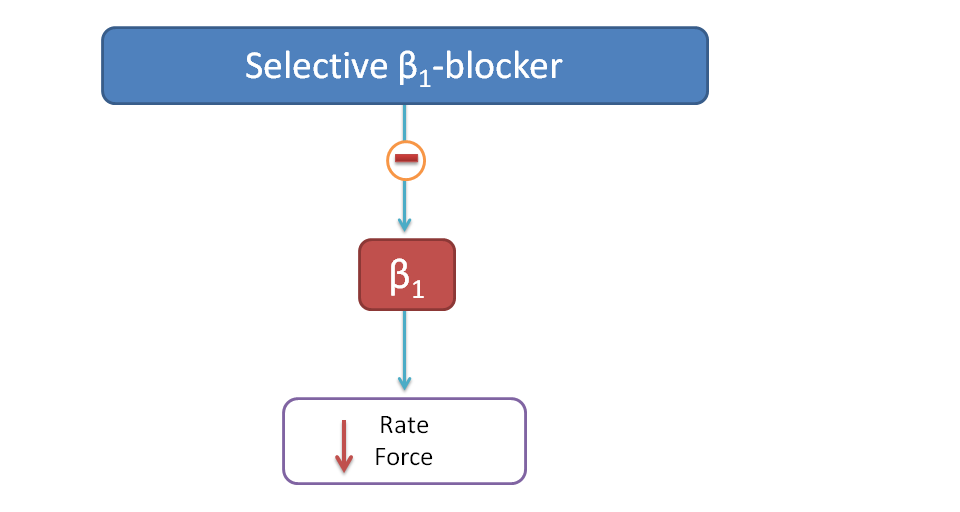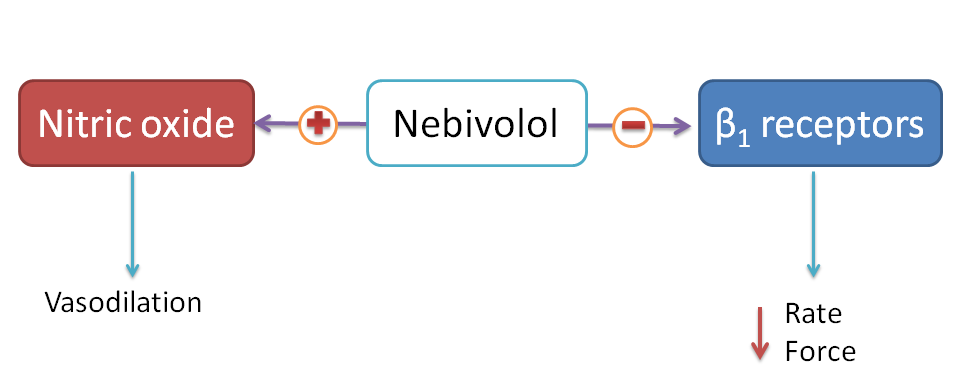How nebivolol produces vasodilatation even it is a beta blocker?
by egpat Posted on 10-06-2017
Nebivolol, as the suffix ‘olol’ indicates, belongs to the category of beta blockers. It has additional vasodialtory action due to release of nitric oxide.
β1 receptors are present on the heart whereas β2 receptors are present on smooth muscles including vascular smooth muscle.
When β1 receptors are activated they increase both rate and force of contraction of the heart. Hence they increase cardiac output as well as cardiac work.
Similarly β2 receptors are responsible for smooth muscle relaxation such as bronchodilation and vasodilation. But vasodilation is observed mainly at skeletal and hepatic blood vessels where β2 receptors are abundant. On the other hand majority of systemic blood vessels are predominant with α1 receptors.
So non-selective beta blockers like propranolol blocks both β1 and β2 receptors resulting in cardiac inhibition and inhibition of bronchodilation. But they don’t have any direct effect on major blood vessels as the later are expressed with α1 receptors.

Similarly selective β1 blockers mainly act on heart decrease both rate and force of contraction. They decrease cardiac output thereby cardiac work and blood pressure. Again these drugs don’t have any direct effect on blood vessels.

Nebivolol is an exceptional drug. It acts both on β1 receptors as well as blood vessels. It acts on β1 receptors thereby decrease force and rate of contraction hence cardiac work.
On the other hand it acts on vascular endothelium and releases nitric oxide which causes vasodilation. As the blood vessels are dilated, it decreases both afterload and preload thereby decreases cardiac work.

It also improves blood supply by vasodilation. Hence it is preferred in hypertension associated with angina.